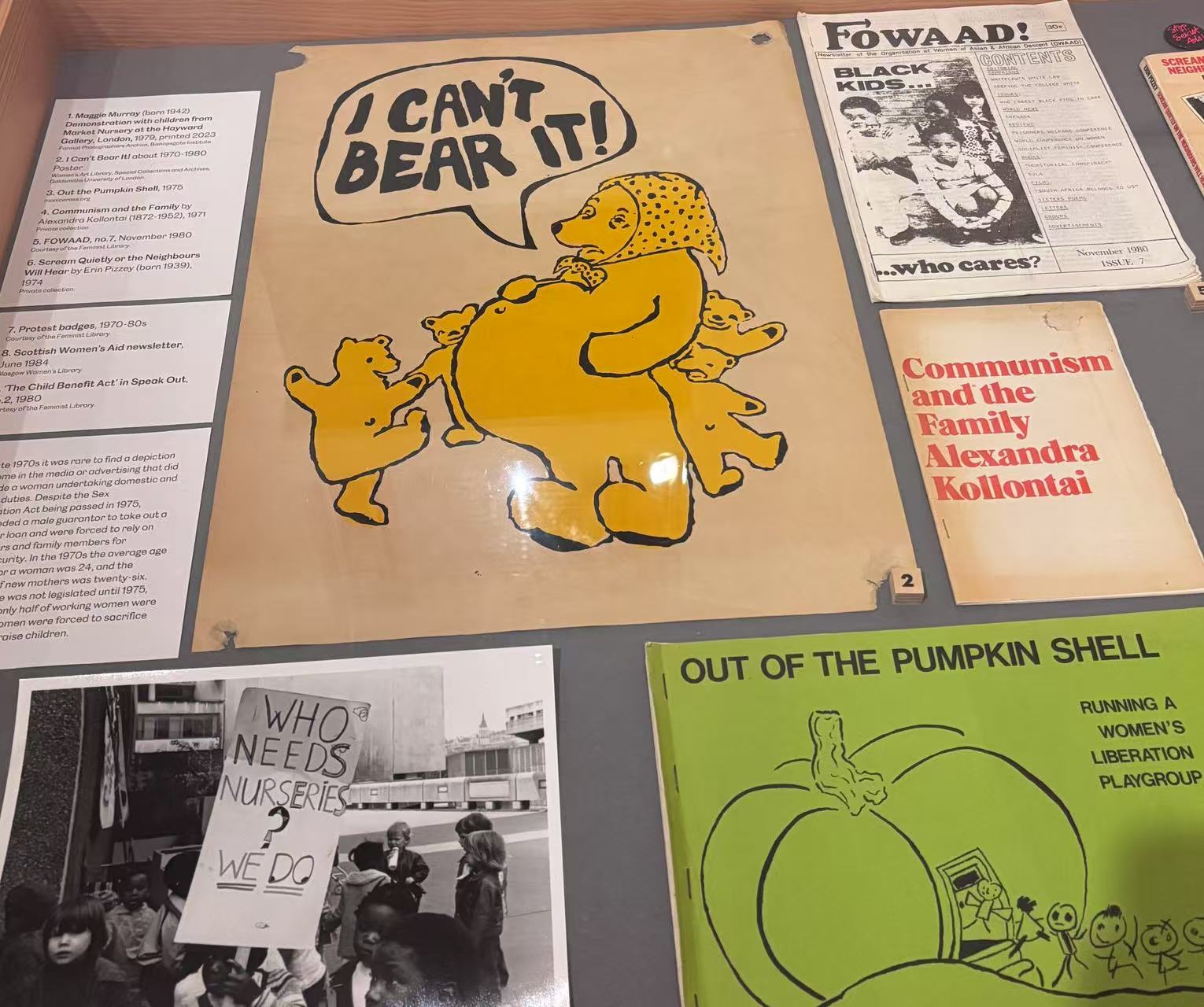Challenges and Possibilities of Feminist Curating
When it comes to the selection of exhibition themes, the initial germ of this idea came from Woolf’s book “A Room of One’s Own” which I had read. In the book, she explored the structural obstacles faced by women in the fields of literature, art, etc., which made me realize the historical roots of women being ignored and marginalized in the art world. On this basis, I consciously visited some exhibitions on feminist themes through opportunities such as travel. Among them, the exhibition “Women in Revolt!” at the National Gallery of Scotland impressed me deeply. This exhibition explores the complex situation of women in society, economy, and culture from the perspective of women’s labor, and also makes me think more deeply about the dilemma of women’s identity in today’s society. Therefore, when asked “What do you want to use as the theme of the exhibition”, the first thing I thought of was “feminism”.
After my interest germinated, I further read relevant literature, hoping to get academic support. I found that the long-standing gender imbalance in museum curatorial practice reflects the limitations of curatorial concepts and methods. Elke Krasny and Lara Perry (2021) believe that the selection of exhibition themes, the construction of narrative frameworks, and the selection criteria of exhibits often unconsciously continue the male-centered art history narrative tradition. This implicit gender bias is not only reflected in the presentation of exhibition content but is also deeply rooted in the curatorial methodology itself.
Iervolino (2023) pointed out that museums often face structural challenges when trying to co-curate with marginalized groups, making it difficult for women and other marginalized groups to have equal voices. Liu Liu (2024) also emphasized that Chinese museums are still influenced by traditional cultural concepts in the planning of women-themed exhibitions, and women’s historical contributions are often underestimated or ignored.
However, Rowles (2020) put forward the opposite argument. He studied the LGBTIQ+themed guided tour project in the Kunsthistorisches Museum Vienna and believed that the educational practice of the museum could challenge the mainstream curatorial perspective to a certain extent and make the exhibition more inclusive. Topaz et al. (2018) conducted a statistical analysis of the diversity of artist groups in major American museums and found that although the proportion of female artists is still low, the collection policy has begun to change in recent years, and more female and non-white artists have been included in the museum system. But in fact, these efforts are still not enough to eliminate the deep-seated curatorial bias. When curators select exhibits and construct narratives, they are inevitably influenced by the existing art evaluation system, which itself was formed in the process of male-dominated art history. Therefore, simply emphasizing the seemingly neutral curatorial standard of “quality” may reinforce existing gender bias. To truly achieve gender equality in museum curating, it is necessary to fundamentally question and reform the existing curatorial standards and art evaluation system, promote more diverse and inclusive curatorial methods, and truly give female artists the space and voice they deserve.
The challenges and possibilities faced by feminist-related exhibitions are also an important reason why I want to choose this theme for curating. In the face of the limitations of traditional gender bias and curatorial methods, I hope to re-examine the gender roles in art history through this exhibition, create more space for expression for female artists, and promote museums to make more far-reaching reforms in diversity and inclusion.
References
Elke Krasny, Lara Perry. Disturbing Gender, Sexuality, and Race: The Collection, Classification, and Hype-Making Mechanisms of “Traveling” Museums. “Museums and Gender”, International Museums, 2021, No. 3-4.
Iervolino, Serena. “Co-curating with Trans People: The Challenges of Collaborating with Heterogeneous Minority Groups.” Museum Management and Curatorship, 2023.
Liu Liu. “A Study on the Planning of Female-themed Exhibitions in Museums from a Feminist Perspective.” Southeast Culture, 2024.
Rowles, Benjamin. “LGBTIQ+ Themed Education at the Kunsthistorisches Museum Vienna—Drag Tours.” Journal of Museum Education, 2020.
Topaz, Chad M., et al. “Diversity of Artists in Major U.S. Museums.” arXiv preprint arXiv:1812.03899, 2018.


